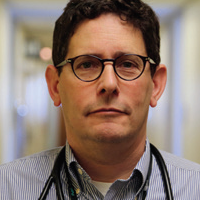Special Events

Meet the Experts – “I’ve got a golden ticket”
The Meet the Expert morning session provided participants a personal opportunity to engage in discussion, pose questions, and hear advice from some of the leading experts in the field of STD prevention. Six experts with diverse experience, backgrounds, and areas of expertise were available for informal discussion at separate tables. Topics covered varied by expert.
Our Experts

José Bauermeister, PhD, MPH is a Professor at the University of Pennsylvania School of Nursing, Director of the Program in Sexuality, Technology and Action Research (PSTAR), and a Senior Fellow at the Penn Center for Public Health Initiatives. His research examines the social, community, interpersonal and biological factors that increase vulnerability to STD/HIV among young sexual and gender minority populations and uses interdisciplinary strategies to develop behavioral and biomedical interventions.

Matthew Golden, MD, MPH is the director of the Public Health – Seattle & King County HIV/STD Program, a professor of medicine at the University of Washington (UW) School of Medicine, and the director of the UW Public Health Capacity Building Center. His research includes evaluations of population-based interventions, research on implementation of expedited partner services, and HIV/STD surveillance projects and program evaluations.

Patricia Kissinger, PhD, MPH is a professor of epidemiology at Tulane University’s School of Public Health and Tropical Medicine and has worked nationally and internationally for more than three decades in the field of HIV, STDs, and women’s reproductive health in Africa, Haiti, and the US. Her research includes investigating the dynamics of STD transmission, particularly among vulnerable populations, the epidemiology of Trichomonas vaginalis, and drivers of repeat STIs.

Kyle Bernstein, PhD, ScM is Chief of the Epidemiology and Statistics Branch in CDC’s Division of STD Prevention and has extensive experience conducting applied epidemiologic research in academic settings and in state and local STD control programs. His research includes evaluating integrated biomedical and behavioral interventions, understanding the epidemiology of re-emerging and newly recognized STDs, and advancing STD prevention and control through translating research to program.

David Harvey, MSW is the executive director of the National Coalition for STD Directors and was previously the founding executive director of AIDS Alliance for Children, Youth & Families. In addition to extensive experience in non-profit leadership and advocacy positions to improve STD/HIV prevention and control, he has published numerous journal articles, book chapters and monographs on public health policy and legal issues.

Jeanne Marrazzo, MD, MPH is a Professor of Medicine and Director of the Division of Infectious Disease at the University of Alabama School of Medicine and faculty for the Alabama-North Carolina STD Prevention Training Center. Her research includes studying the human microbiome as it relates to female reproductive tract infections and hormonal contraceptive use, biomedical interventions to prevent HIV, health care seeking behavior in LGBTQ populations, and diagnosis and epidemiology of bacterial STDs.
STeD Talks: Nine Awesome Abstracts Delivered in a New Format
Inspired by the world-renowned TED Talks, this new session included nine rapid fire oral presentations on a variety of STD-related topics. Each presenter had approximately 4 minutes to present the highlights of their work, followed by a novel approach to question and answer.
Moderators
Kyle Bernstein
Centers for Disease Control and Prevention, GA, USA
Harrell Chesson
Centers for Disease Control and Prevention, GA, USA
Oral Presentations
Jeremy Grey, PhD1, Sarah Kidd, MD1, Shivika Trivedi, MD2, Elizabeth Torrone, PhD, MSPH1, Hillard Weinstock, MD, MPH1
1Centers for Disease Control and Prevention, GA, USA, 2CDC Foundation, GA, USA
Background: Reducing morbidity related to substance use is a public health priority. We report recent trends in substance use among persons with primary and secondary (P&S) syphilis.
Methods: We reviewed national P&S syphilis case report data from 2012-2016 and described the number and percentage of cases that self-reported substance use in the past 12 months. We further described use of cocaine, crack, heroin, methamphetamines, and injection drugs specifically and stratified our analysis by sex, sex of sex partners, and region.
Results: During 2012-2016, the percentage of P&S syphilis cases reporting any substance use was stable (22%-23%); however, as the overall burden of syphilis increased during that period, the absolute number of cases reporting substance use increased 72% from 3,493 (2012) to 5,993 (2016). Similar trends (stable percent reporting use: 8%-9% and an increase in cases: 1,218 to 2,509) were seen for reported use of five specific substances: cocaine, crack, heroin, methamphetamines, and/or injection drugs. Among men who have sex with men (MSM), the percent reporting use of any of the five substances was stable (9%) while the absolute number increased (894 to 1,473); however, reported use among men who have sex with women only (MSW) increased from 8% to 13% (increase in cases: 156 to 498). Among women, the reported use increased annually from 9% to 16% (increase in cases: 127 to 490). Analyses indicated regional heterogeneity, with the West consistently reporting the highest percentages of use among MSW and women.
Conclusion: Although MSM P&S syphilis cases more frequently report substance use compared to MSW and women, the proportion of MSW and women reporting cocaine, crack, heroin, methamphetamine, or injection drug use rose rapidly over the past five years. This may suggest changes in substance use behavior, sexual networks, or reporting among heterosexual P&S syphilis cases, particularly in the West.
Contact: Jeremy Grey / yej7@cdc.gov
Marion Carter1, Mark Stenger1, Christina Schumacher2, Ellen Klinger3, Katherine Hsu4, Kim Toevs5
1Centers for Disease Control and Prevention, GA, USA, 2Johns Hopkins University, MD, USA, 3New York City Department of Health and Mental Hygiene, NY, USA, 4Massachusetts Department of Public Health, MA, USA, 5Multnomah County Health Department, OR, USA
Background: It is important to better understand the role of different provider types in diagnosing STDs, and patients’ motives for using those providers, to help target STD clinical support and inform discussions of STD health care seeking behavior.
Methods: Health departments in ten jurisdictions across the US interviewed a random sample of all people diagnosed and reported with gonorrhea (GC). Using data from July 2015-June 2017, we characterize sources of care and reasons patients sought care from those sources. We highlight comparisons by patient demographics, symptoms, and insurance status.
Results: Of 9,562 GC patients interviewed, 78% percent (95% C.I.: 77-79%) reported being insured at the time of diagnosis. Sixty-one percent reported STD symptoms prior to seeking care; and of those, 30% waited a week or longer to seek care. Most common diagnosing provider types were private providers (34%), STD clinics (22%) and family planning clinics (12%). Forty-three percent of patients without insurance were diagnosed in categorical STD clinics, compared to 17% with insurance. Top reasons for seeking care at the provider seen were the ability to be seen right away (reported by 55%); followed by privacy offered, being close by, and being a regular source of care (each 40-41%). Half of patients without insurance reported choosing their provider because it was free, compared to a quarter of those with insurance. More patients with insurance reported out-of-pocket costs for their visit, compared to patients without (31% vs. 19%).
Conclusion: In these jurisdictions, specialty care health centers like STD and family planning clinics played an equally important role in diagnosing GC as private providers. Marked differences in healthcare characteristics were observed by insurance status. Changes to the health care system may have large implications for GC diagnosis, care, and treatment.
Contact: Marion Carter / acq0@cdc.gov
Kristev Hildenbrandt, MPH, BS, Tahereh Pourtaher, BA, Kirsten Rowe, MS, BS, Travis O’Donnell, BA, Sue Anne Payette, MS, BS
AIDS Institute, NY, USA
Background: Passport to Partner Services (PS) is an evidence-based CDC intervention providing training to Disease Intervention Specialists (DIS) and other PS providers. Staff provide free, voluntary, and confidential partner services to patients diagnosed with STDs, including HIV. Passport to PS is a blended training (consisting of instructor-led and online content). This study is the first to provide a systematic evaluation of the instructor-led PS trainings.
Methods: This evaluation focused on Track D trainings offered by the NYS PTC, one of three training centers providing PS trainings. Track D provides the most comprehensive training, incorporating all aspects of PS. We analyzed six-month post-course evaluation data (N=397) from 38 trainings in 25 cities. The standardized CDC survey questions participants’ self-rated gained confidence, effectiveness of training, and open-ended recommendations. Our mixed method approach consists of R-assisted descriptive and bivariate analysis as well as inductive coding of open-ended content.
Results: Eighty two percent of participants had less than four years of work experience. Ninety percent of respondents indicated the course was effective. The most frequently used skill was “referral/linkage to care” (75%). Participants’ self-assessed confidence (rated as confident or very confident) ranged between 42% and 93% for the 24 listed skills (mean=78%, median=81%). The highest-rated skills were obtaining necessary medical information, resolving patient concerns, and interviewing patients. The lowest-rated skills were utilizing Major Analytical Points (MAP) Sheet and Visual Case Analysis (VCA). Among the 184 respondents (58%) who provided recommendations for the program, recurring themes included more VCA training (16%), more challenging interview cases (15%), and additional medical training (7%).
Conclusion: Overall, PS trainings were rated to be effective, significantly improved confidence, and developed crucial skills for DIS and other PS providers across the country. Some participants indicated that PS trainings can be enhanced by including more challenging interview cases as well as additional syphilis and medical training.
Contact: Kristev Hildenbrandt / kristev.hildenbrandt@health.ny.gov
Alyson Decker, MPH, MS, Hannah Brosnan, MPH, Alison Hughes, PhD, MPH, Stephanie Cohen, MD, MPH, Susan Philip, MD, MPH, Darpun Sachdev, MD
San Francisco Department of Public Health, CA, USA
Background: In October 2016, The San Francisco Department of Public Health (SFDPH) launched a public health detailing demonstration project to understand and improve HIV pre-exposure prophylaxis (PrEP) prescribing practices among healthcare providers. We sought to evaluate how primary care providers (PCPs) assess sexual behaviors, HIV and STD-related risk factors, and PrEP eligibility.
Methods: A trained nurse practitioner visited clinician practices to provide tailored training on the benefits and use of PrEP to potential PrEP prescribers serving MSM and trans women. We administered a paper-based, self-report survey at the first detailing session with the provider. We calculated descriptive statistics and chi-squared hypothesis testing with SAS v9.4.
Results: There were 252 surveys collected from 47 practices receiving PrEP detailing from October 2016 to October 2017. Eighty-two percent were primary care providers, 23% were HIV care providers, and less than half (48%) had ever prescribed PrEP. The majority of respondents (60%) did not routinely conduct annual sexual histories with their patients. Among providers with MSM/trans women in their practices, 38% (78/204) did not routinely ask patients whether they had receptive anal intercourse, and 33% (70/212) did not screen patients for rectal gonorrhea or chlamydia. Factors associated with prescribing PrEP were routine sexual history taking (59% vs. 41%, p<0.05), assessing receptive anal intercourse (67% vs. 33%, p<0.05), and screening patients for rectal STDs (69% vs. 31%, p<0.05).
Conclusion: Among providers detailed, annual sexual health history taking is not routine practice in patients at risk for HIV. Over a third of providers do not routinely assess MSM and trans women for rectal intercourse or perform rectal STD testing. This may contribute to missed opportunities for extra-genital STD screening and PrEP prescribing. In response, SFDPH is launching a follow-up sexual health detailing campaign to increase provider ability to routinely discuss sexual health and test for STDs in their clinical practice.
Contact: Hannah Brosnan / hannah.brosnan@sfdph.org
Nancy Brener, PhD
Centers for Disease Control and Prevention, GA, USA
Background: By providing health education and health services to students, schools can play a critical role in the prevention and treatment of STDs among youth. School district policies can influence the extent to which such education and services are available to students. To understand how school district policies related to STD prevention and treatment have changed over time, this study assessed the prevalence of such policies in the United States between 2000 and 2016.
Methods: We analyzed data from four cycles (2000, 2006, 2012, and 2016) of the School Health Policies and Practices Study (SHPPS), a national survey periodically conducted to assess school health policies and practices. SHPPS collected data related to STD prevention and treatment among nationally representative samples of school districts using online or mailed questionnaires. Secular trend analyses took into account all years of available data and were performed using logistic regression to determine whether changes over time were statistically significant.
Results: Nationwide, 81.6% of districts required high schools and 69.0% of districts required middle schools to teach about STD prevention. The percentage of districts that required elementary schools to teach about STD prevention decreased from 39.4% in 2000 to 22.9% in 2016 (p < .01). Less than 1% of districts required schools to provide STD testing or treatment. Districts were more likely to require schools to provide referrals for these services (15.8% for STD testing and 14.8% for STD treatment). The percentage of districts that required schools to provide STD prevention services in one-on-one or small-group settings decreased from 45.0% in 2000 to 32.2% in 2016 (p < .01).
Conclusion: Decreases in the percentage of districts requiring STD prevention education and services is concerning. Room for improvement also clearly exists in district policies that can help students obtain STD testing and treatment.
Contact: Nancy Brener / nad1@cdc.gov
Wendasha Jenkins Hall, PhD, MS, Karen Kroeger, PhD, Matthew Hogben, PhD
Centers for Disease Control and Prevention, GA, USA
Background: Pre-exposure prophylaxis (PrEP) has revolutionized HIV prevention among men who have sex with men (MSM). When taken correctly and consistently, PrEP can reduce the risk of sexually transmitted HIV infection by more than 90%. However, uptake has been slow. Considering MSM’s use of the Internet as a site for community building and sexual health information seeking, online discussion board content can provide insight into the population’s perceptions of, uncertainties about, and experiences with PrEP.
Methods: Public discussion board posts submitted to two MSM-focused Reddit communities (‘AskGayBros’ and ‘PrEPared’), between January 1, 2015-December 31, 2015, were collected. Using Nvivo 11, we performed a text search query to find all mentions of ‘PrEP’ and ‘Truvada’ among the online posts. A qualitative content analysis was conducted using the resulting posts to identify themes that emerged from the data regarding PrEP.
Results: We collected 921 discussion posts from both Reddit communities. Our text query yielded 125 discussion posts that specifically mentioned ‘PrEP’ or ‘Truvada’ between January 1, 2015 and December 31, 2015. Due to the anonymous nature of the Reddit platform, community members’ demographic information was not available. The content analysis revealed that community members expressed concerns about (1) the safety of condomless sexual acts between casual and/or serodiscordant partners while using PrEP, (2) the cost and accessibility of PrEP, (3) potential side effects, (4) the impact of PrEP on condom use and STD risk, and (5) navigating patient-provider interactions when inquiring about PrEP.
Conclusion: This study takes a novel approach to understanding MSM’s perceptions and uncertainties regarding PrEP. Reddit is an untapped data source that can be leveraged to gain insight on MSM’s sexual attitudes and possible risk behaviors. Information garnered from Reddit and other social media platforms could help researchers identify gaps in knowledge among MSM and potential points of intervention.
Contact: Wendasha Jenkins Hall / NRY9@cdc.gov
Kristen Kreisel, PhD, Christi Phillips, BS, John Papp, PhD, Elizabeth Torrone, PhD, MSPH
Centers for Disease Control and Prevention, GA, USA
Background: Interpreting trends in reported Chlamydia trachomatis (CT) cases is difficult, as trends are influenced by screening coverage changes. Population-based surveys, such as the National Health and Nutrition Examination Survey (NHANES), provide nationally representative CT prevalence estimates and an opportunity to monitor trends in women in the U.S.
Methods: We examined NHANES CT laboratory data among women aged 14-39 years, combining data from eight NHANES cycles (collected in 2-year increments) into four time periods (2001-2004, 2005-2008, 2009-2012, 2013-2016). We estimated weighted CT prevalence with 95% confidence intervals (CI), overall and by sociodemographics, for each time period, and estimated the average percent change (APC) across time periods using JoinPoint software, fitting trend data to a log-linear model.
Results: During 2001–2016, CT prevalence was stable among all females aged 14-39 years: 2.3% (95% CI: 1.6%, 3.0%) during 2001-2004 and 1.7% (95% CI: 1.2%, 2.2%) during 2013-2016 (APC: -2.2%; 95% CI: -5.9%, 1.7%; p=0.14). Among all females aged 14–24 years, prevalence was 3.6% (95% CI: 2.4%, 4.8%) during 2001-2004 and 2.8% (95% CI: 1.8%, 3.9%) during 2013-2016 (APC: -1.9%; 95% CI: -4.6%, 0.8%; p=0.10). Prevalence among non-Hispanic black females aged 14-24 years decreased from 10.9% in 2001-2004 to 5.7% in 2013-2016 (APC: -4.4%; 95% CI: -9.8%, 1.2%; p=0.08), although this was not statistically significant. Among all females aged 14-19 years, prevalence decreased from 3.9% in 2001-2004 to 2.3% in 2013-2016 (APC: -3.9%; 95% CI: -7.0%, -0.8%; p=0.03). Prevalence in non-Hispanic black females aged 14-19 years fluctuated, from 10.9% in 2001-2004 to 12.0% in 2009-2012 to 4.4% in 2013-2016 (APC: -3.2%; 95% CI: -18.7%, 15.4%; p=0.51).
Conclusion: National estimates suggest that CT prevalence among females aged 14-24 years, the population targeted for screening, remained consistently high during 2001-2016. We provide the first evidence of decreasing CT prevalence among adolescent females in the U.S.
Contact: Kristen Kreisel / ltq1@cdc.gov
Eloisa LLata, MD, MPH1, Jim Braxton1, Jaeyoung Hong, PhD1, Juli Carlos-Henderson, MPH2, Roxanne Kerani, PhD3, Preeti Pathela, DrPH, MPH4, Robert Kohn, MPH5, Christina Schumacher, PhD6, Elizabeth Torrone, PhD1
1Centers for Disease Control and Prevention, GA, USA, 2Los Angeles County Department of Public Health, CA, USA, 3University of Washington, WA, USA, 4New York City Department of Health and Mental Hygiene, NY, USA, 5San Francisco Department of Public Health, CA, USA, 6Johns Hopkins University School of Medicine, MD, USA
Background: STD clinics provide critical prevention and care services, serving as safety net providers for persons at high risk for STDs. We describe trends in demographics among patients seeking services in 25 STD clinics over a seven-year period.
Methods: Using data from six jurisdictions (Baltimore, Los Angeles, New York City, Philadelphia, San Francisco, Seattle) in the STD surveillance network (SSuN) from 2010-2016, we describe patients by sex, sexual behavior, age, and race/ethnicity. We adjusted for heterogeneity across jurisdictions using an inverse variance weighted random effects model. Joinpoint models were used to identify trends and estimate average annual percent change (APC).
Results: A total of 875,347 unique patients, comprising 1,346,198 visits, presented to SSuN STD clinics from 2010-2016. The number of patients steadily declined from 157,112 in 2010 to 96,236 in 2016. Visits declined from 236,584 in 2010 to 166,422 in 2016. Minimal changes in the proportions of patients by race/ethnicity were observed. The adjusted proportion of female clinic patients decreased significantly from 34.4% in 2010 to 27.9% in 2016 (APC = -3.3%; 95% CI: -4.3, -2.3), with the greatest decreases seen among females <25 years (APC= -4.0%; 95% CI: -4.5, -3.4). Concurrently, the adjusted proportion of patients who were men-who-have-sex-with-men (MSM) increased from 12.6% to 19.6% (APC = 8.1%; 95% CI: 6.5, 9.7), with the greatest increases seen for 25-34 year old MSM (APC= 5.0%; 95%CI: 4.1, 5.8). Overall, the number of unique MSM increased by 30% 2010-2016 while the number of unique women decreased by 47%.
Conclusion: The demographic composition of patients attending SSuN STD clinics has changed in recent years, with higher levels of utilization by MSM, and less utilization by young women. Additional data, including impacts of fiscal cuts and changes in the US healthcare system, are needed to understand STD clinic utilization on a national scale.
Contact: Eloisa Llata / gge3@cdc.gov
Hannah Brosnan, MPH, Robert Kohn, MPH, Trang Nguyen, PhD, MPH, Susan Philip, MD, MPH, Stephanie Cohen, MD, MPH
San Francisco Department of Public Health, CA, USA
Background: Understanding reasons why those at risk for HIV choose not to take PrEP is important for guiding PrEP messaging and outreach. We assessed reasons why STD clinic clients were not on PrEP.
Methods: All MSM and trans clients seeking services at SF City Clinic (SFCC) are assessed for PrEP. We compared sexual behaviors among clients reporting low perceived risk for HIV as a reason for not taking PrEP with those reporting current PrEP use.
Results: From April 2016 to December 2017, there were 11,303 visits by MSM and trans clients not known to be HIV positive at SFCC. PrEP questions were completed at 87% of these visits. Clients reported having heard of PrEP at 96% of visits, and currently taking PrEP at 44% of visits. Clients reported “not at high risk” as reason for not taking PrEP at 56% of 3,273 visits where a reason was recorded.
Compared with individuals currently on PrEP, those reporting low perceived risk as a reason not on PrEP were older (mean 38 vs. 35 years, p<0.01), reported fewer partners in 3 months (mean 4.1 vs 9.8, p<0.01), and were less likely to use methamphetamines (5% vs 13%, p<0.01) or have had an STD in 12 months (20% vs 56%, p<0.01). The majority of those reporting low perceived risk reported three or more total partners (53%), and 14% reported two or more anal receptive sex partners.
Conclusion: PrEP knowledge and use are high among MSM and trans clients at SFCC. Many clients not taking PrEP due to low perceived risk for HIV are indicated for PrEP per CDC guidelines. PrEP decision making involves personal, nuanced definitions of HIV risk, and risk-based messaging may exclude individuals who might benefit from PrEP. Outreach programs should be informed by varying definitions of risk and focus on de-stigmatizing, client-centered PrEP messaging.
Contact: HANNAH BROSNAN / hannah.brosnan@sfdph.org